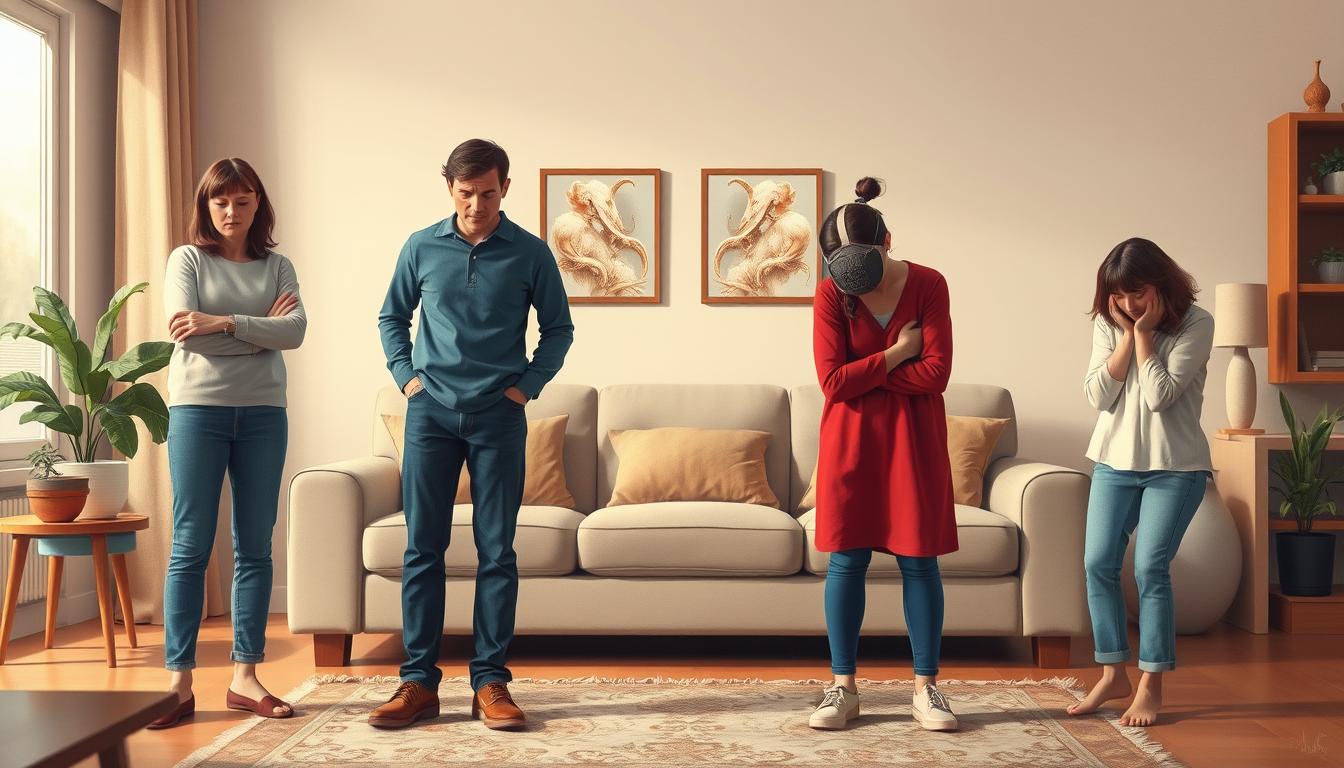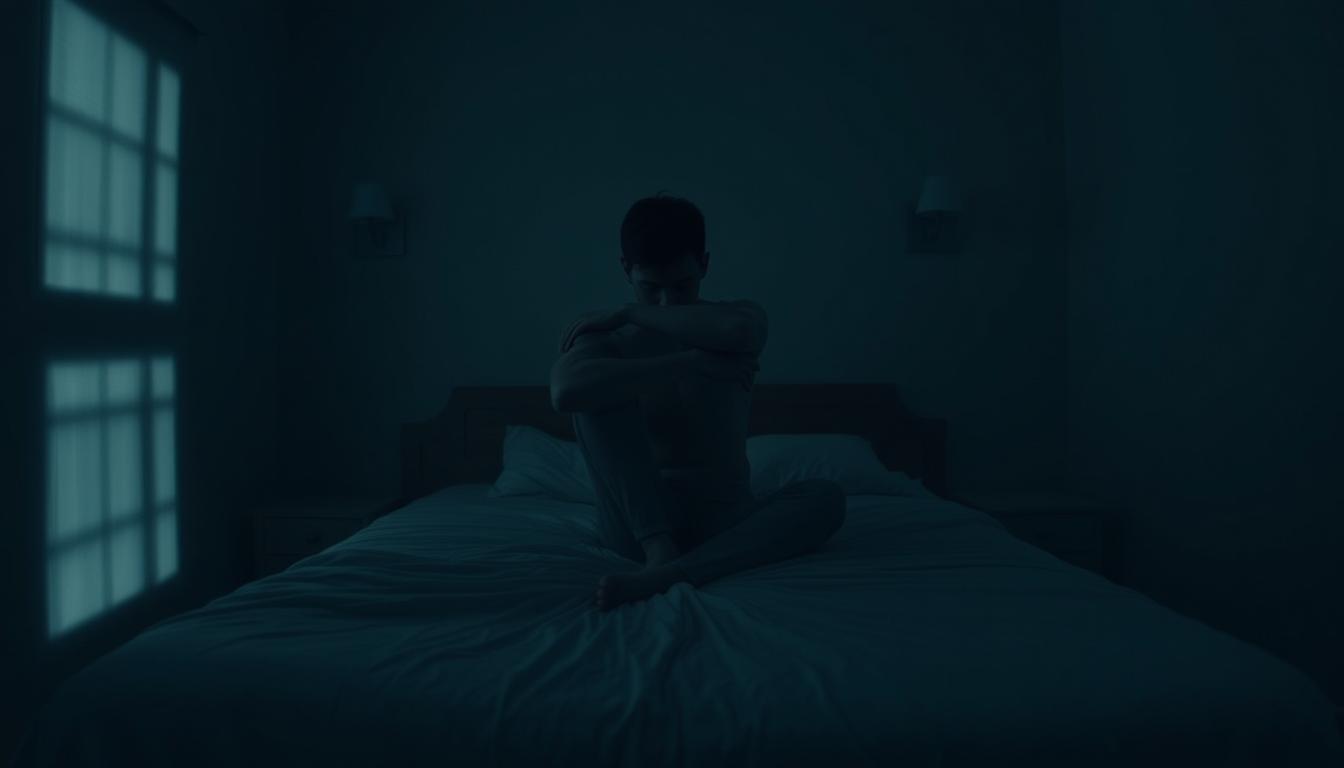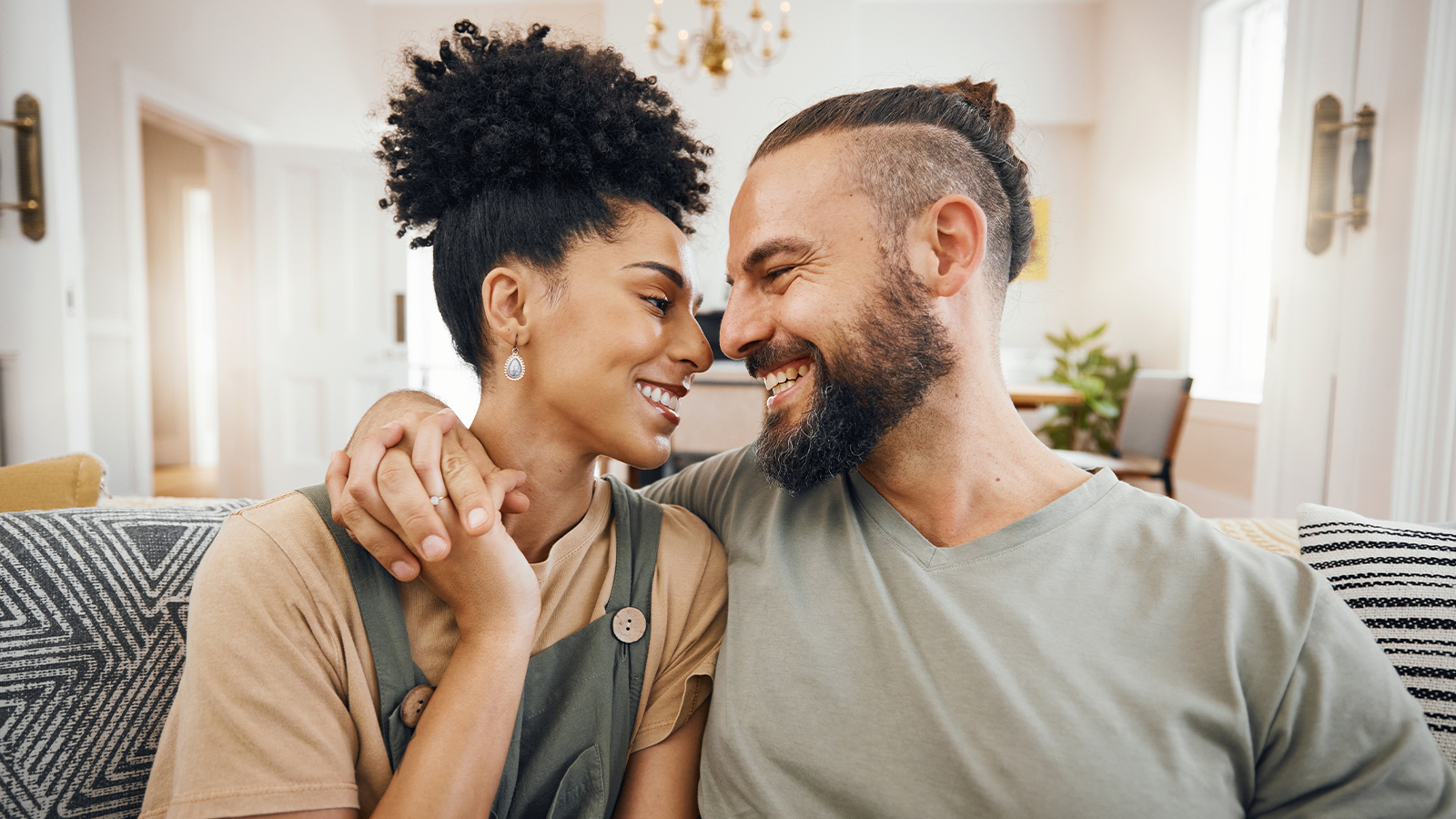
Ever wonder why you keep dating the same type of person? Or why some relationships feel easy while others leave you anxious and drained? The answer might lie in your attachment style. Columbia psychiatrist Amir Levine and psychologist Rachel Heller revealed groundbreaking insights about how our early childhood bonds shape the way we love as adults.
Your attachment style is like an invisible blueprint that guides your romantic relationship patterns. It affects everything from how you handle conflicts to your expectations about intimacy and even your sexual feelings. The good news? Understanding attachment theory can transform your love life.
Thanks to social media and books like "Attached: The New Science of Adult Attachment," millions of people are discovering their attachment patterns. Whether you have secure attachment, anxious attachment, avoidant attachment, or disorganized attachment, this knowledge gives you power. Research shows that simply learning about your adult attachment style can help you build healthier connections.
Your attachment capacity isn't set in stone. You can grow and change throughout your life. By understanding how attachment styles and relationships work together, you'll unlock the secrets to lasting love and deeper emotional bonds.
If you're searching for answers on how to help your relationship grow, check out Shield Bearer's couples counseling services. Our trained therapists are here to help you through every step of your journey.
Key Takeaways
- Your attachment style shapes how you behave in romantic relationships
- Four main attachment types exist: secure, anxious, avoidant, and disorganized
- Early childhood experiences with caregivers create your attachment blueprint
- Understanding your attachment pattern can improve relationship conflicts
- Attachment styles affect intimacy expectations and sexual feelings
- You can develop more secure attachment patterns at any age
- Knowledge of attachment theory helps create healthier romantic connections
Understanding Attachment Theory and Its Origins
Your relationship patterns today have roots that stretch back to your earliest days. Attachment theory shows how the bonds you formed as a baby or child with your primary caregiver shape your future relationships. This framework helps explain why you connect with others the way you do. When recognizing your attachment style, you can begin to shed light on how you deal with others, especially when it comes to your partner.
The Pioneering Work of John Bowlby and Mary Ainsworth
British psychiatrist John Bowlby changed psychology in the 1950s by studying infant bonding. His colleague, American psychologist Mary Ainsworth, expanded this work. Together, they found that the attachment process starts right after birth and lasts a lifetime. They began to learn more about attachment theories by focusing on the attachment figures and their personal relationships.
By exploring the emotional bonds between primary caregivers and infants, social and emotional development became crucial in determining what types of attachment would form later in intimate relationships. Bowlby's work showed that maternal deprivation, for example, was shown to have a terrible effect on later relationships, while Ainsworth's experiment focused on the type of maternal sensitivity also had a great influence of attachment styles that would form.
How Early Childhood Experiences Shape Adult Relationships
The care you got as an infant shaped your attachment orientation, which influences you today. If your caregiver was always there for you, you learned that relationships are safe and stable. But if they were unpredictable or chaotic, you developed ways to deal with uncertainty and insecurity.
These early responses to attachment became your default way of connecting with romantic partners and how you formed close relationships. Learning more about attachment theory can help you and your partner form closer bonds while learning each individual's types of attachment style.
The Science Behind Emotional Bonds and Different Attachment Styles
The science of adult attachment reveals that your infant brain was wired by early experiences. From an evolutionary view, strong bonds ensured survival. Theory and research show this is why your need to belong feels so strong. A parent who stayed closer to their child was generally able to provide more security and trust as they looked out for them. A parent who choose to preoccupy themselves with other ventures may not have heard their child cry or tended to their needs as quickly as a closer parent, which can lead to feelings of insecurity.
Your nervous system uses those original attachment patterns to navigate intimacy, trust, and emotional safety in the form of attachment styles in relationships later on. The attachment style often is determined from these early developments.

The Four Attachment Styles in Romantic Relationships
Ever notice certain patterns that begin in your romantic relationships? These patterns often come from your attachment style. Psychologists have found four adult attachment styles that influence how we experience love and closeness in our relationships in adulthood.
For example, about half of adults have a secure attachment style. People with a secure attachment mean they feel okay with being close and trust their partners. The other half has anxious, avoidant, or disorganized attachment styles, making relationships harder. Anxious and avoidant attachment can mean that feelings of trust are harder to earn, and insecurities tend to be more prevalent, especially with intimacy in relationships.
Your attachment style can change within your relationships, especially with romantic love interests. Life experiences, therapy, and good relationships can help shift it. You might show different patterns or different attachment perspectives within relationships with different partners. Research shows there are actually four distinct attachment styles, not just three.
| Attachment Style | Population Percentage | Key Traits |
| Secure | 50-60% | Comfortable with intimacy, trusting |
| Anxious | 15-20% | Needs reassurance, fears abandonment |
| Avoidant | 20-25% | Values independence, avoids closeness |
| Disorganized | 5-10% | Mixed feelings about relationships |
Knowing about these four adult attachment styles helps you understand relationship behaviors. You can see specific attachment patterns that might be holding you back from having more fulfilling relationships. Each style is on a spectrum, so you might see parts of yourself in more than one.

Secure Attachment: Building Healthy and Stable Relationships
A secure attachment style is key for happy romantic relationships. It helps you connect deeply with your partner while keeping your own identity. This balance lets you enjoy closeness and independence with ease, yet avoids any type of ambivalent attachment that could form from too much distance or disconnect.
Characteristics of Securely Attached Individuals
Securely attached people have special qualities in their relationships. Here are some traits this attachment style may show:
- Express emotions openly without fear of judgment
- Set clear boundaries while respecting others' limits
- Handle conflicts calmly without catastrophizing
- Ask for support when needed without feeling weak
- Trust partners during time apart
Secure attachment style individuals take the blame for their mistakes and apologize genuinely when they have close relationships. They recover from setbacks and see challenges as chances to grow with their partners instead of finding ways to be combative or disagreeable.
How Secure Attachment Develops in Childhood
Your attachment style usually starts in infancy, thanks to consistent caregiver responses. When parents are emotionally there and meet their child's needs, the child learns to feel secure. Even in the toddler to teen years, when a child's needs are met or even addressed to allow them to feel heard, this begins to develop a securely attached individual. These early lessons shape their future relationships.
Benefits of Secure Attachment in Romantic Partnerships
| Relationship Area | How Securely Attached People Excel |
| Communication | Share feelings honestly and listen actively |
| Trust Building | Give partners space while staying connected |
| Conflict Resolution | Address issues directly without attacking |
| Emotional Support | Offer comfort while maintaining boundaries |

Anxious Attachment: When Love Feels Like Walking on Eggshells
Living with anxious attachment makes every relationship feel like a rollercoaster. You constantly check your phone for messages, wondering if your partner loves you or even cares. People with this attachment style tend to feel panicked when they don't respond right away or begin to think thoughts that could be completely untrue.
People with anxious attachment style in their adult relationships get too preoccupied with the relationship instead of focusing on their own individual needs or feeling secure with any type of distance. You might see these signs in yourself:
- Constantly seeking reassurance from your partner
- Reading too much into every text message or facial expression
- Feeling devastated when your partner needs space
- Becoming clingy within a relationship when you sense any distance
- Using guilt to keep your partner close
This attachment pattern often comes from childhood. You might have had caregivers who were sometimes warm, sometimes distant. This inconsistent pattern in important relationships made you unsure if love would be there when you needed it or required it.
Your anxious and avoidant behaviors create a cycle that exhausts everyone. Those with anxious attachment style tend to crave closeness, but when you display attachment behaviors such as neediness, it might push people away. Learning to be less anxious takes time and often needs professional help and guidance. Recognizing these patterns is the first step to building healthier relationships.

Avoidant Attachment: The Fear of Getting Too Close
Do you pull away when your partner wants to get closer? Do you feel the need to push back from moments of intimacy or pull away when your romantic partner starts to get to know you on a deeper level? This might be avoidant attachment. It builds a wall around your feelings, keeping you safe but alone. You think being independent is key, believing you don't need others or close relationships to feel whole.
Recognizing Avoidant Behaviors in Relationships
Signs of an avoidant attachment style can be hard to spot. You might see yourself:
- Withdrawing when your partner needs emotional support
- Keeping secrets or avoiding deep conversations
- Feeling uncomfortable with physical affection
- Preferring casual relationships over committed ones
- Minimizing your partner's feelings during conflicts
The Emotional Distance Dilemma: Anxious Styles
Living with avoidant attachment means always fighting your desire for connection. You might sabotage romantic attachment when it gets too serious. This creates a cycle where you push away the closeness you really want with your behaviors, but are left feeling empty as you crave intimacy from a healthy relationship, like many others have.
Why Independence Becomes a Defense Mechanism From Anxious and Avoidant Styles With Your Romantic Partner
Your strong independence likely started when you were young, and caregivers weren't there for you. You learned to depend only on yourself since fending for yourself became your way of surviving or getting your needs met. Now, letting someone close feels risky and unnecessary. Your fearful attachment style makes you think that needing someone is weak, so you stay distant within the relationship to feel safe.
Learn More: Codependency vs. Interdependency in Relationships
Disorganized Attachment: The Push and Pull of Intimacy
Living with disorganized attachment feels like being caught in an emotional tug-of-war. You desperately want close relationships, yet the fear of getting hurt keeps you pushing people away. These behaviors can pose threats to the relationship and internal conflict. This conflict creates a confusing pattern where you find yourself wanting intimacy one moment and running from it the next.
The fearful-avoidant attachment style develops when childhood experiences send mixed signals about safety and love. Your caregivers might have been unpredictable, comforting you one day and frightening you the next. This creates a pattern where relationships feel both necessary and dangerous.
- Intense fear of rejection paired with deep longing for connection
- Difficulty trusting partners, even when they prove trustworthy
- Emotional reactions that seem extreme or unpredictable
- Trouble identifying what you're feeling in the moment
- Self-sabotaging behaviors when relationships get serious
Among the three insecure attachment types, individuals who disorganize their emotional responses face unique challenges. You might find yourself acting clingy one week and distant the next. Partners often feel confused by these shifts, not understanding that your behavior stems from deep-seated fears. This can make the relationship feel unstable at best.
The good news? Recognizing your disorganized attachment patterns is the first step toward healing. Many people with this attachment style learn to build stable, loving relationships through patience, self-awareness, and professional support.
How Your Different Attachment Styles and Adult Relationships Impact Daily Life
Your attachment style affects every moment with your partner. It shapes how you talk in the morning and at night. Knowing this can help you strengthen your bond and tackle problems better.
Communication Patterns Based on Adult Attachment Types
Attachment styles shape how we talk to each other. Secure people share their needs openly and listen well. Anxious ones might talk too much or always ask for reassurance.
Avoidant types tend to avoid deep talks, while disorganized adult romantic attachment can be all over the place.
| Attachment Style | Verbal Communication | Nonverbal Signals |
| Secure | Clear, direct expression | Open body language, steady eye contact |
| Anxious | Frequent checking in, long texts | Tense posture, seeking physical closeness |
| Avoidant | Brief responses, topic deflection | Physical distance, limited eye contact |
| Disorganized | Inconsistent messaging | Mixed signals, unpredictable reactions |
Conflict Resolution and Attachment Security
Arguments show our attachment styles clearly. Secure people handle disagreements calmly and work on solutions together. Anxious ones might make conflicts worse by fearing being left or becoming clingy.
Avoidant types might pull away or stop talking about important issues. Those with a disorganized attachment system may have trouble responding consistently in fights.
The Role of Trust and Vulnerability in Romantic Relationships
Trust grows when we open up emotionally. Secure attachers share feelings easily and accept support. Insecure styles, on the other hand, make it hard to be close through defensive actions.
Digital tools like texting can help those who find it hard to be open face-to-face. Regular messages can keep the connection strong without feeling overwhelmed.
Breaking Free from Insecure Adult Attachment Styles
Changing your attachment patterns takes courage and commitment. You've lived with these patterns for years, but you're not stuck forever. Learning about attachment and its impact on relationships opens the door to change. The first step is recognizing where you are and where you want to be.
Developing Self-Awareness About Your Attachment Style
Your attachment style helps you understand your reactions in relationships. Start by observing your patterns. Do you panic when your partner needs space? Do you push people away when they get close? These behaviors show your attachment needs and fears.
Keep a journal to track your emotions and reactions in relationships. Notice what triggers attachment insecurity and what makes you feel safe. This awareness will guide your change.
Working with a Qualified Therapist at Shield Bearer Counseling
Shield Bearer Counseling in Houston, Texas, specializes in attachment issues. Their therapists help you understand how attachment security affects relationships. They guide you through healing.
Therapy offers a safe space to explore your attachment patterns without judgment. You'll work through past experiences and develop healthier connections.
Building Emotional Intelligence and Nonverbal Communication Skills
Strengthening your emotional skills builds attachment security. Focus on these areas:
- Self-awareness: Recognize your emotions as they arise
- Self-management: Respond instead of reacting to triggers
- Social awareness: Read others' emotional cues accurately
- Relationship management: Navigate conflicts with empathy
Pay attention to body language, tone of voice, and facial expressions. These nonverbal signals often communicate more than words. They help you connect deeply with your partner.

Creating Lasting Change in Your Romantic Relationships
Changing your attachment patterns takes time and effort, but it's worth it. You can make your relationships more fulfilling by understanding your attachment behaviors. Your brain can always form new pathways, helping you move from insecure to secure attachment.
Begin by being around people who show secure attachment. Their consistent support helps you see what stable relationships are like. Being in a relationship with someone secure teaches you new ways to connect, slowly replacing old habits. This doesn't mean giving up on casual relationships, but being more aware in all connections.
Self-development tools can help you grow faster:
- Read a handbook of attachment theory to understand your style
- Use workbooks to recognize and change patterns
- Practice mindfulness to catch attachment behavioral issues early on
- Join support groups for shared struggles
Professional therapy offers personalized help for deeper change. A good therapist helps you understand your attachment and guides you to healthier ways. They create a safe space for you to practice being vulnerable and trusting, key for secure relationships.
Change happens slowly. Every small step toward security makes your connections stronger. By facing your attachment challenges, you're building a future filled with love and connection.
Conclusion
Your attachment style as an adult affects your romantic relationships in many ways. It influences how you talk to your partner and how you deal with relationship problems. The good news is, you can change your attachment style.
Knowing your attachment style gives you power. It helps you understand why you react a certain way in relationships. This knowledge lets you make better choices. Changing your attachment style from insecure to secure is possible with therapy and practice.
Don't let old patterns control your love life anymore. You can work with therapists at Shield Bearer Counseling or use self-help resources. Changing takes time, but every step you take is important. By learning about attachment and growing, you can have the relationships you want.
FAQ
What are the four different attachment styles in adults?
Adults can have four main attachment styles. About 50-60% have a secure attachment. The others are anxious, avoidant, and disorganized. These styles come from early relationships with caregivers and affect how we connect with others as adults.
Can your attachment style change over time?
Yes, your attachment style can change. Life events, therapy, or a relationship with someone secure can help. Your brain can grow and change throughout your life.
How do I know if I have an anxious attachment style?
Anxious attachment makes you overly needy and fearful of being left. You might become clingy or constantly seek reassurance. This often comes from inconsistent care in childhood.
What are the signs of an avoidant attachment style?
Avoidant attachment makes you value independence more than intimacy. You might pull away when someone gets close or prefer casual relationships. You secretly crave deep connections, even if you don't show it.
How does attachment theory help improve my romantic relationship?
Attachment theory helps you understand unhealthy patterns in relationships. It makes you aware of your behaviors. Knowing your attachment style and how it interacts with others can help you build a better relationship.
What makes someone with a secure attachment style different in relationships?
Securely attached people are comfortable with emotions and set boundaries. They trust their partners and handle conflicts well. Their early experiences with caregivers helped them develop stable relationships.
Can two people with insecure attachment styles have a healthy relationship?
It's possible for insecurely attached people to have a healthy relationship. Growth and awareness are key. Utilizing therapy with caring centers such as Shield Bearer Counseling, can help couples work through their attachment issues.
How do attachment styles influence communication in romantic relationships?
Your attachment style affects how you communicate and handle conflicts. Secure people are open and seek support. Anxious individuals might be demanding, while avoidant people shut down emotionally.
What's the connection between childhood experiences and adult attachment styles?
Your early relationships with caregivers shape your attachment style. Consistent care leads to secure attachment. Inconsistent or rejecting care can result in anxious or avoidant attachment.
How can therapy help change my attachment style?
Therapy with attachment specialists can help you understand and change your style. They teach you to recognize triggers and improve emotional regulation. This helps you develop more secure attachment behaviors.